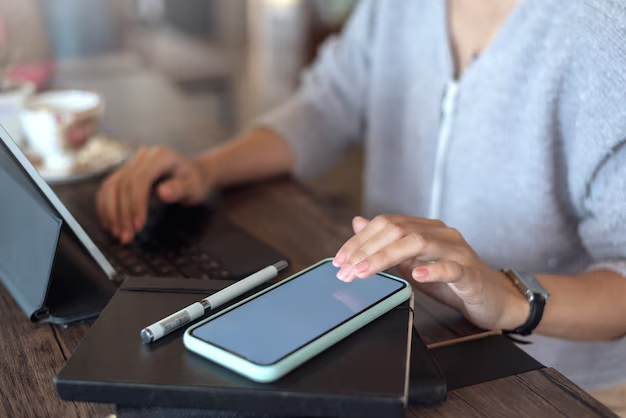Effortlessly Transferring Photos from Your Android to Your Computer: A Complete Guide
In today's digital age, capturing moments with our smartphones has become second nature. But even as our photo libraries swell with countless memories, they can often end up stranded on our devices. If you're an Android user looking to transfer photos to your computer, you're in luck. This guide will walk you through a variety of methods, ensuring you can easily and quickly move your images where you need them.
Choosing the Right Method for Your Needs
When transferring photos from Android to a computer, it boils down to preference and convenience. Multiple methods exist, each with its own advantages, ensuring there’s a way for everyone.
- USB Cable Transfer
- Using Bluetooth
- Cloud Storage Solutions
- Wi-Fi Transfer Apps
- Email and Messaging Services
Let's delve deeper into these options.
USB Cable Transfer: A Direct Approach
Using a USB cable is perhaps the most straightforward method. It doesn’t require an internet connection and works on most computers out-of-the-box.
Steps to Transfer via USB:
- Connect Your Devices: Plug your Android into your computer using a USB cable.
- Select Transfer Mode: On your Android, you might get a prompt to select the type of USB connection. Choose "File Transfer" or "MTP" (Media Transfer Protocol).
- Transfer Files: Open "File Explorer" on Windows or "Finder" on Mac to locate your device. Navigate to the "DCIM" folder where most camera photos save. Copy and paste the images to your computer's desired location.
Tip: For Mac users, you may need to install "Android File Transfer" to make this process seamless.
Using Bluetooth: Wireless but Limited
Bluetooth can be a handy tool, especially if you only need to transfer a few images and cables aren’t around.
Steps for Bluetooth Transfer:
- Enable Bluetooth: Turn on Bluetooth on both your Android device and computer.
- Pair Devices: Ensure your devices are paired. This usually involves accepting pairing requests on both devices.
- Select Photos for Transfer: On your Android, select the photos and hit "Share," then choose Bluetooth as the mode of sharing.
- Receive on Computer: Accept the incoming file on your computer to complete the transfer.
Drawback: Bluetooth can be slow and cumbersome for large numbers of photos.
Cloud Storage Solutions: Modern and Efficient
Cloud services like Google Drive, Dropbox, and OneDrive provide an effortless way to sync photos across devices without handling physical files.
How to Use Cloud Storage:
- Install the App: Download a cloud storage app on your Android if not pre-installed (e.g., Google Photos for Google Drive).
- Upload Photos: Open the app, select your photos or auto-upload option, and ensure they sync to the cloud.
- Access on Computer: Log into the same cloud service on your computer browser or app, and download photos as needed.
Benefits: This method provides the flexibility of accessing your photos anywhere with internet access.
Wi-Fi Transfer Apps: Fast and Cordless
Apps designed for Wi-Fi transfer can speed up the process and offer an alternative to cloud and Bluetooth methods.
Using a Wi-Fi Transfer App:
- Choose an App: Apps like "AirDroid," "ShareMe," or "Zapya" are popular.
- Connect Devices: Ensure both devices are on the same Wi-Fi network.
- Follow App Instructions: Open the app, select the photos to transfer and follow the on-screen instructions to complete the process on your computer.
Consideration: Ensure both devices are connected to a stable Wi-Fi network to avoid interruptions.
Email and Messaging: Convenient for Selective Transfers
Emailing or messaging photos to yourself is ideal for quickly transferring a few images, especially if they need forwarding afterward.
Steps for Email:
- Select Photos: Choose the photos you wish to send.
- Compose Email: Attach the photos to an email and send them to your email address.
- Download on Computer: Open the email on your computer and download the attachments.
Emoji Tip 🎯: Efficient for sharing small bundles of pictures quickly.
Summarizing Your Options: A Handy Guide
Here’s a summarized view of these methods for easy decision-making:
| Method | Speed | Ease of Use | Best For | Drawback |
|---|---|---|---|---|
| USB Cable | Fast | Simple | Large Transfers | Requires cable and ports |
| Bluetooth | Slow | Moderate | Small, Nearby Transfers | Slow for large numbers |
| Cloud Storage | Fast (depending on network) | User-friendly | Anywhere Access | Needs internet access |
| Wi-Fi Transfer Apps | High | App-dependent | Quick, Cordless Transfers | Needs same network connection |
| Email/Messaging | Slow for many photos | Very Easy | Selective, Quick Transfers | Attachment size limitations |
Final Thoughts: Empowering Your Photography Experience
Transferring your cherished memories from Android to computer need not be a stressful task. By assessing the quantity of photos, internet connectivity, and personal preferences, you’ll find the perfect fit among these methods. Each offers a unique set of advantages, from the reliability of USB cables to the modern ease of cloud storage.
Remember, the aim is to ensure your photos are safe and accessible whenever you need them, empowering you to share and store precious moments seamlessly. Embrace the technology at your fingertips and let your photo transfers be a painless bridge from creation to preservation.

Related Topics
- How Can I Transfer a Video From Iphone To Computer
- How Can I Transfer Apps From Iphone To Ipad
- How Can I Transfer Apps From One Iphone To Another
- How Can I Transfer Contacts From Iphone To Iphone
- How Can I Transfer Contacts From One Iphone To Another
- How Can I Transfer Data From Iphone To Android
- How Can I Transfer Data From Iphone To Iphone
- How Can I Transfer Data From Iphone To Samsung
- How Can I Transfer Files From Android To Pc
- How Can I Transfer From Iphone To Samsung